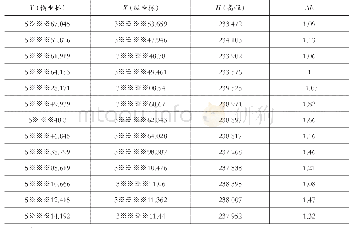《Table 2Simulation conditions at dx=1.0 m》
 提示:宽带有限、当前游客访问压缩模式
提示:宽带有限、当前游客访问压缩模式
本系列图表出处文件名:随高清版一同展现
《利用弱可压SPH计算三维均匀柔性驳水动力系数(英文)》
Using the boundary and fluid geometry as described by Kim et al.(2014),a uniform rectangular barge is modelled with main particulars presented in Table 1.Both boundary and fluid domains are discretised using particles whose size and number depend on the initial particle spacing.For the boundary,two layers of boundary particles are adopted to model the conditions of a numerical wave tank(NWT).The domain is modelled in three dimensions where y axis is in the athwartships and x and z axes are along the barge and in the vertical direction,respectively.Unlike FVM model,the WCSPH code in Dual SPHysics(Crespo et al.2015)does not have the option to model only half of the barge about its longitudinal axis to reduce the computational cost(Chen et al.2013).Therefore,due to the large dimension,several considerations,such as domain size and requisite computational power,need to be made in determining the appropriate particle spacing and particle number.Among them is the number of particles needed particularly in the vicinity of the barge and flow field near the free surface at high frequencies of oscillation.Furthermore,the sensitivity analysis for particle size carried out by Ramli et al.(2015)was also taken into consideration.Particle spacing of 1.0 m with particle numbers shown in Table 2 is considered adequate in capturing details of forces along the oscillating barge.Figure 1 shows all the domain with red denoting the barge comprising of two layers of boundary particles while cross sections of the domain are presented in Fig.2.All simulations are carried out for a range of forced oscillation frequencies shown in Table 2 with each wavelength,λ,and oscillation frequency.The size of the numerical domain varies with each wavelength.
| 图表编号 | XD0024730100 严禁用于非法目的 |
|---|---|
| 绘制时间 | 2018.09.25 |
| 作者 | Muhammad Zahir Ramli、P.Temarel、M.Tan |
| 绘制单位 | Institute of Oceanography and Maritime Studies (INOCEM),International Islamic University Malaysia (IIUM)、Fluid Structure Interactions Group, Faculty of Engineering and the Environment, University of Southampton、Fluid Structure Interactions Group, Faculty |
| 更多格式 | 高清、无水印(增值服务) |





